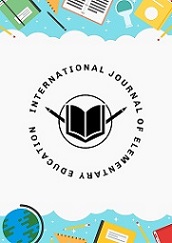The Implementation Tandur Quantum Teaching Learning Model to Improve Social Learning Achievement
DOI:
https://doi.org/10.23887/ijee.v4i2.26593Kata Kunci:
quantum teaching, TANDUR, study schievementAbstrak
Social studies is a subject with memorizing learning that scared some students of it is applied without considering students need and students’ various learning style. Indirectly this situation would affect the students’ learning outcomes. Besides, there are some difficulties happen in social studies for advance class, such as: a) Students have low ability on developing traits and attitude in daily life; b) IPS only taught in a very limited time. So, it is hard to cover all the important values. Therefore, learning process should emphasize on an enjoyable process that relates to ability and Students learning style. The purpose of this research is to analyze the impact of the Quantum Teaching Technique TANDUR towards social studies for elementary school students' learning achievement. The type of research is the basic pattern of The Posttest Only Control Group with a quasi-experiment. The research Will conduct on the sixth grade of Elementary School Students in SD 07 Sungai Raya Kubu Raya Regency, Kalimantan Barat. The population of the research consists of 106 Students, with 70 Students as the sample. Data analysis used in this research is MANOVA (Multivariant Analysis of Variance) assisted by SPSS 17.00 by windows. The result shows that IPS learning achievement between Students with Quantum Teaching Technique TANDUR learning model is more significant than Students with a conventional model (F 1 3.682 and sig = 0,000; p < 0,05). This research would give an overview of teacher's innovation by applying various teaching models to create meaningful learning to improve Students learning achievement.
Referensi
Abdullah. (2017). Pendekatan dan Model Pembelajaran yang Mengaktifkan Siswa. Edureligia |, 01(01), 45–62.
Adoe, D. P. (2016). Implementasi Pembelajaran Quantum Teaching Untuk Meningkatkan Keaktifan Dan Hasil Belajar Ips Siswa Kelas V sd. . . E-Journal PGSD Universitas Pendidikan Ganesha Jurusan PGSD, 4(1).
Al Farizi, M. F., Sudiyanto, & H. (2019). Analysis of Indonesian language learning obstacles in primary schools. International Journal of Educational Methodology, 5(4), 663–669. https://doi.org/https://doi.org/10.12973/ijem.5.4.663.
Astiti, D. (2017). Penerapan Model Pembelajaran Contextual Teaching And Learning, Quantum Teaching Terhadap Motivasi Berprestasi Dan Hasil Belajar IPS Siswa Kelas VII. Jurnal Pendidikan IPS Indonesia, 1(2).
Cahyaningrum, Amaliyah Dwi, D. (2019). Pengaruh Model Pembelajaran Quantum Teaching Tipe Tandur Terhadap Hasil Belajar. Indonesian Journal of Science and Mathematics Education, 2(3).
Cahyaningrum, A. D., AD, Y., & Asyhari, A. (2019). Pengaruh Model Pembelajaran Quantum Teaching Tipe Tandur Terhadap Hasil Belajar. Indonesian Journal of Science and Mathematics Education, 2(3), 372–379. https://doi.org/10.24042/ijsme.v2i3.4363
De Porter, et al. (2017). Quantum Teaching Mempraktikkan Quantum learning di Ruang-ruang Kelas. Mizan Pustaka.
Depdiknas. (2007). Rencana strategis Departement Pendidikan Nasional 2005 - 2009. Pusat Informasi dan Humas Departemen Pendidikan Nasional.
Djaali. (2012). Psikologi Pendidikan. PT Bumi Angkasa.
Geel, M. V. (2015). Assessing The Effects Of A School Wide Data Based Decision Making Intervention On Student Achievement Growth In Primary Schools. American Educational Research Journal, 35, 1–35.
Gentry, R. (2013). Collaboration Skills Pre-Service Teachers Acquire In A Responsive Preparation Program. Journal of Instructional Pedagogies, 1–9.
Gunawan, M. dan. (2012). Pendidikan IPS Filosofi, konsep, dan Aplikasi. Alfabeta.
Hamalik, O. (2012). Proses Belajar Mengajar. Bumi Aksara.
Jaynes, R. J. W. dan J. H. (2016). Motivasi Belajar. Cerdas Pustaka.
Khairani, Annisa Laras, D. (2016). Pengaruh Model Pembelajaran Quantum Teaching Tipe Tandur Diintegrasikan Dengan Kartu Tangram Terhadap Hasil Belajar Matematika Siswa. Jurnal Pendidikan Matematika & Matematika., 2(1).
Kirom, A. (2017). Peran Guru Dan Peserta Didik Dalam Proses Pembelajaran Berbasis Multikultural. Al Murabbi, 3(1), 69–80.
Lestari, P. & A. H. (2018). Penerapan Model Quantum Teaching Sebagai Upaya Meningkatkan Hasil Belajar Siswa Pada Mata Pelajaran IPS Kelas VIII Smp Pgri 3 Jakarta. Research and Development Journal Of Education, 5(1).
Lott, J., & Kenny, L. W. (2013). State Teacher Union Strength And Student Achievement. Economics Of Education Review, 35, 93–103.
Mulyati, T. (2016). Pendekatan Konstruktivisme Dan Dampaknnya Bagi Hasil Belajar Matematika Siswa SD. EduHumaniora | Jurnal Pendidikan Dasar Kampus Cibiru, 1(2). https://doi.org/10.17509/eh.v1i2.2738
Musyafa, H. (2015). Sang Guru: Novel Biografi Ki Hadjar Dewantara, Kehidupan, Pemikiran, dan Perjuangan Pendiri Tamansiswa (1889-1959). Mizan Media Utama.
Najib, D. A. (2016). Pengaruh Penerapan Pembelajaran Bermakna (Meaningfull Learning) Pada Pembelajaran Tematik IPS Terpadu Terhadap Hasil Belajar Siswa Kelas III di MI Ahliyah IV Palembang. Jurnal Imiah PGMI. Jurnal.radenfatah.ac.id
Riyanto, Y. (2012). Paradigma Baru Pembelajaran sebagai Referensi bagi Guru Pendidik dalam Implementasi Pembelajaran yang Efektif dan Berkualitas. Kencana Prenada Media Group.
Sardiman. (2017). Interaksi dan Motivasi Belajar Mengajar. Rajawali Pers.
Sarwi. (2013). Implementasi Model Pembelajaran Inovatif untukMengembangkan Nilai Karakter Siswa SMP. Jurnal Penelitian Pendidikan.
Zakirman, Z. Z. (2017). Pengelompokkan Gaya Belajar Mahaanak Menurut Teori Honey Mumford Berdasarkan Intensitas Kunjungan Pustaka. RISTEKDIK: Jurnal Bimbingan Dan Konseling, 2(2).
Unduhan
Diterbitkan
Cara Mengutip
Terbitan
Bagian
Lisensi
Authors who publish with the International Journal of Elementary Education agree to the following terms:
- Authors retain copyright and grant the journal the right of first publication with the work simultaneously licensed under a Creative Commons Attribution License (CC BY-SA 4.0) that allows others to share the work with an acknowledgment of the work's authorship and initial publication in this journal.
- Authors are able to enter into separate, additional contractual arrangements for the non-exclusive distribution of the journal's published version of the work (e.g., post it to an institutional repository or publish it in a book), with an acknowledgment of its initial publication in this journal.
- Authors are permitted and encouraged to post their work online (e.g., in institutional repositories or on their website) prior to and during the submission process, as it can lead to productive exchanges, as well as earlier and greater citation of published work. (See The Effect of Open Access)










